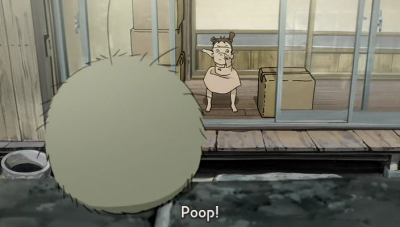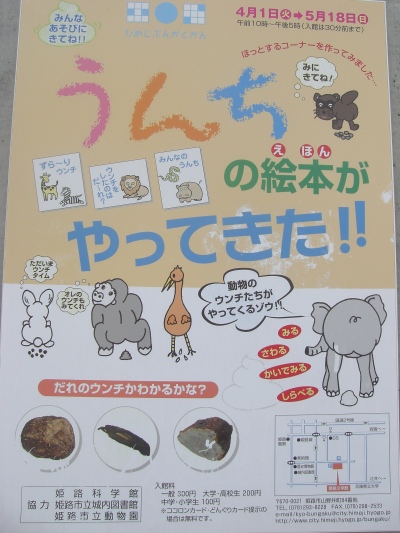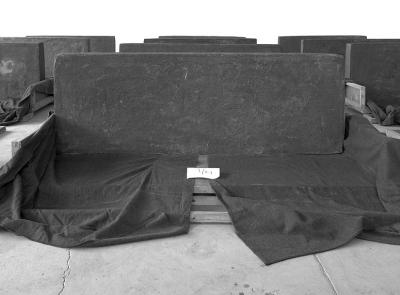In Dennou Coil, Kyoko (age 3) has a penchant for running about, pointing at things, and exclaiming, “unchi!” (poop):
This is fairly accurate as far as a characterization of 3-year old humor goes. By that logic, the Himeji City Museum of Literature, in Himeji, Japan (near Osaka) was until May of this year the funniest place in the universe. This is because the museum, inexplicably, had an exhibit devoted to poop:
translation:
Everybody come and play! Come and look! We have poop books!
Rabbit: It’s poop time!
Gorilla: Come and see my poop too!
Elephant: Animal poop is here yo!
See it. Touch it! Smell it! Explore!
Can you guess what animals made this poop? (3 pictures)
Himeji Museum Of Literature, Special Exhibit. April 1st-May 18th
Head over to thomas’s post at Babelhut and see for yourself. It is in fact not only exactly what it seems to be, but in fact even more so than you think it would be. Fear the Japanese, indeed. Though it must be admitted that were this exhibit to come to any children’s museum in the United States, it would make more money than the mind can comfortably comprehend.
(It should be noted that I have blogged about poop before. I also have on occasion been fascinated with toilets. Insert bad joke about straining too hard here…)



